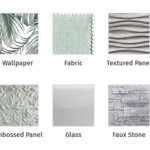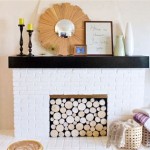What Does it Mean When A Fireplace Is Capped?
A fireplace cap is a protective covering placed at the top of a chimney. It serves multiple purposes, primarily related to preventing unwanted elements from entering the chimney flue and potentially causing damage, safety hazards, or inefficiencies. Understanding the reasons for capping a fireplace, the different types of caps available, and the potential implications of having or not having one are all crucial for homeowners with fireplaces.
The presence of a cap on a fireplace chimney is indicative of an effort to protect the chimney and the home it services. While some older homes may lack chimney caps due to outdated building practices or neglect, their absence can lead to a range of problems. Similarly, an improperly installed or damaged cap can be as detrimental as having no cap at all. Therefore, identifying and understanding the state of a fireplace cap is an important part of home maintenance.
Preventing Water Damage
One of the primary functions of a fireplace cap is to prevent rain and snow from entering the chimney flue. Water intrusion can cause significant damage to the chimney structure itself. Bricks and mortar are porous materials that can absorb water. When this water freezes, it expands, leading to cracks and spalling (the crumbling or flaking of brick or stone). Over time, this freeze-thaw cycle can weaken the entire chimney, potentially leading to costly repairs or even chimney collapse.
Moreover, water entering the chimney can damage the interior of the home. It can leak into the firebox, causing rust and corrosion. It can also seep into the walls and ceilings surrounding the fireplace, leading to water stains, mold growth, and structural damage. A properly installed chimney cap acts as a barrier, diverting water away from the flue and protecting both the chimney and the home from water-related damage. Different cap designs offer varying levels of protection. Some caps are simple screens that primarily keep out debris and animals, while others have solid tops that provide complete protection from precipitation.
The importance of preventing water damage cannot be overstated. The cost of repairing a chimney damaged by water intrusion can be substantial, often exceeding the cost of a quality chimney cap by a significant margin. Furthermore, the damage can extend beyond the chimney itself, affecting the structural integrity and aesthetic appearance of the home. Therefore, investing in a chimney cap is a proactive measure that can save homeowners considerable expense and inconvenience in the long run.
Keeping Out Animals and Debris
In addition to preventing water damage, a fireplace cap also serves as a barrier against animals and debris entering the chimney. Chimneys provide an attractive nesting site for birds, squirrels, raccoons, and other small animals. These animals can build nests inside the flue, obstructing airflow and creating a fire hazard. A blockage in the chimney can cause smoke to back up into the home, leading to carbon monoxide poisoning.
Furthermore, animal droppings and decaying organic matter can create unpleasant odors and attract insects. Removing animal nests from a chimney can be a difficult and messy process, often requiring the services of a professional chimney sweep. A well-maintained chimney cap effectively prevents animals from entering the flue, eliminating the risk of animal infestations and associated problems. Similarly, debris such as leaves, twigs, and branches can accumulate in the chimney, causing blockages and reducing airflow. These obstructions can also increase the risk of chimney fires, as creosote (a flammable byproduct of burning wood) can build up more rapidly in a blocked flue.
By keeping out animals and debris, a chimney cap helps ensure that the flue remains clear and unobstructed, allowing for proper ventilation and reducing the risk of fire hazards. Various cap designs incorporate mesh screens to prevent animals and debris from entering while still allowing for adequate airflow. The specific mesh size should be appropriate for the types of animals and debris common in the area. Regular inspection and cleaning of the cap are also essential to ensure its continued effectiveness.
Improving Fireplace Efficiency and Safety
A capped fireplace can contribute to improved fireplace efficiency and safety. By preventing downdrafts, a chimney cap can help maintain a consistent draft, ensuring that smoke is properly vented out of the chimney and not back into the home. Downdrafts can occur when wind conditions cause air to flow down the chimney, reversing the normal airflow. This can result in smoke filling the room, creating a nuisance and potentially posing a health hazard.
A chimney cap with a wind directional feature can help mitigate downdrafts by directing the wind away from the flue opening. This allows for a more consistent and efficient draft, improving the overall performance of the fireplace. Furthermore, a chimney cap can help prevent sparks and embers from escaping the chimney and potentially igniting nearby flammable materials, such as dry leaves or wood piles. This is particularly important in areas prone to wildfires. Some chimney caps are equipped with spark arrestors, which are fine mesh screens designed to contain sparks and embers within the chimney.
The presence of a functioning spark arrestor can significantly reduce the risk of chimney-related fires, protecting both the home and the surrounding environment. Moreover, a chimney cap can help prevent the deterioration of the chimney liner. The liner is a protective layer inside the chimney that prevents corrosive byproducts of combustion from damaging the chimney structure. Water intrusion and other factors can accelerate the deterioration of the liner, leading to costly repairs. By protecting the chimney from water and debris, a cap helps prolong the life of the liner and maintain the overall integrity of the chimney system.
Choosing the right type of fireplace cap depends on several factors, including the climate, the type of fuel burned, and the presence of nearby trees or other potential sources of debris. A professional chimney sweep can provide guidance on selecting the appropriate cap for a specific fireplace and chimney. Regular inspection and maintenance of the cap are also crucial to ensure its continued effectiveness. This includes checking for damage, cleaning away debris, and ensuring that the cap is securely attached to the chimney.
In summary, the purpose of a cap on a fireplace is multifaceted, encompassing protection against water damage, animal intrusion, debris accumulation, downdrafts, and the spread of sparks. Its presence signifies a homeowner's commitment to maintaining their chimney, ensuring safety, and maximizing the efficiency of their fireplace.

Chimney Capping How To Cap Off A And Seal

Chimney Crown Cap Cover What Do They All Mean Champions

What Is A Chimney Cap And Why Do You Need One

Everything To Know About Chimney Caps The Family Handyman

Why You Must Cap An Unused Chimney Black Goose

How To Cap A Chimney 13 Steps With S Wikihow

How To Cap A Chimney 13 Steps With S Wikihow

Chimney Cap Installation Guide Full Service

Do I Really Need A Chimney Cap Capital Corp

Why Is Venting Your Unused Or Retired Chimney Still Very Important
Related Posts








